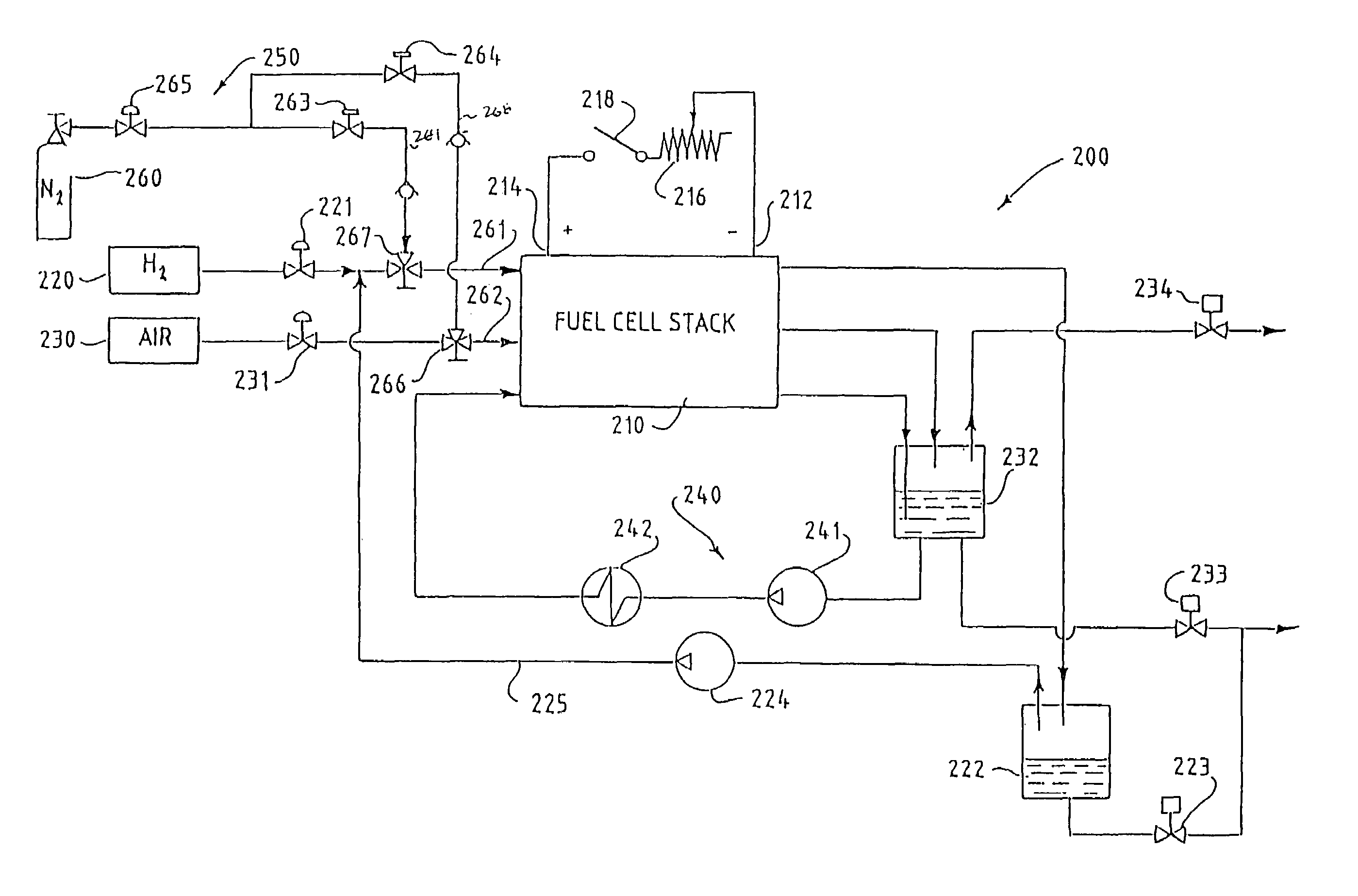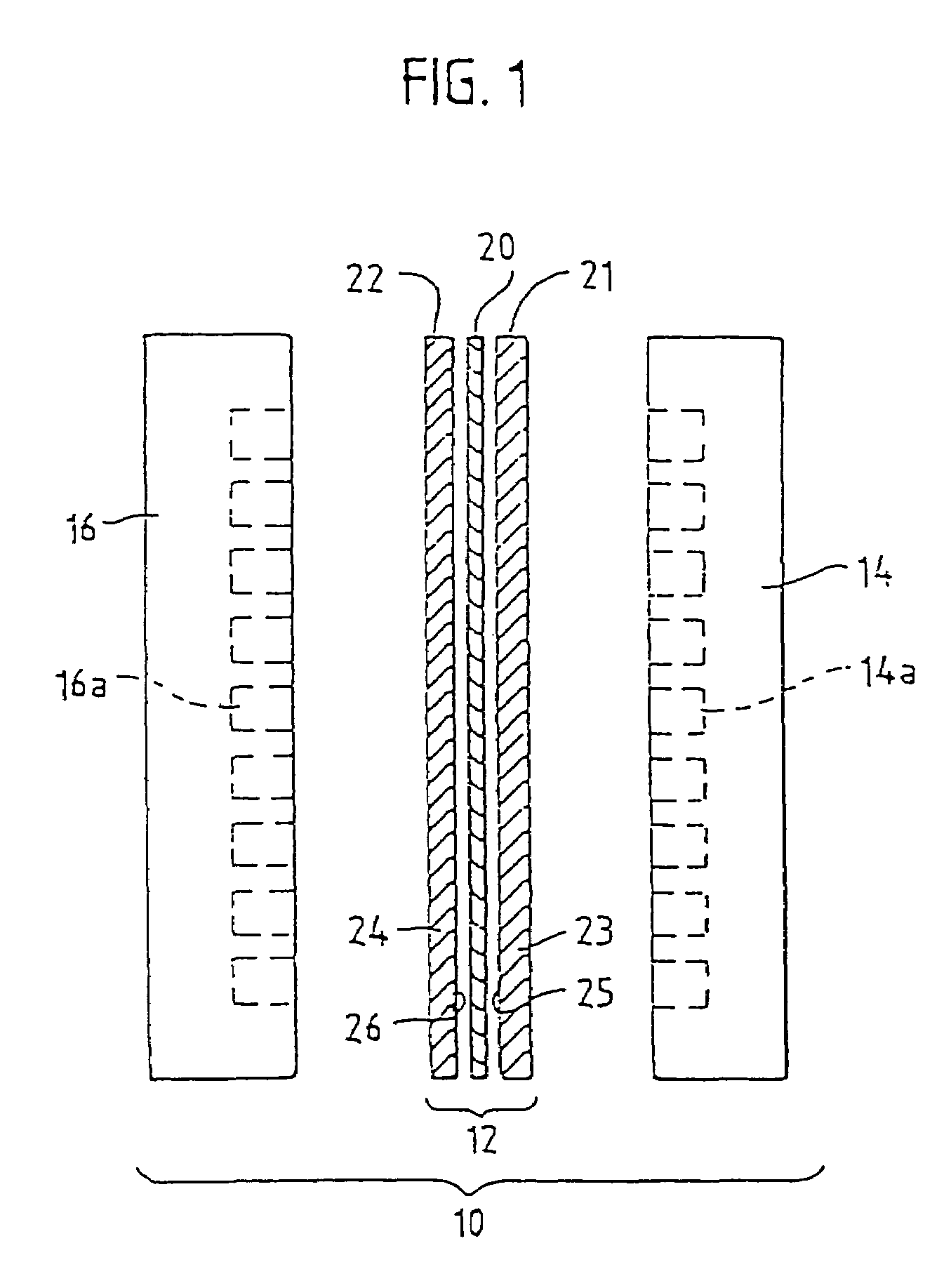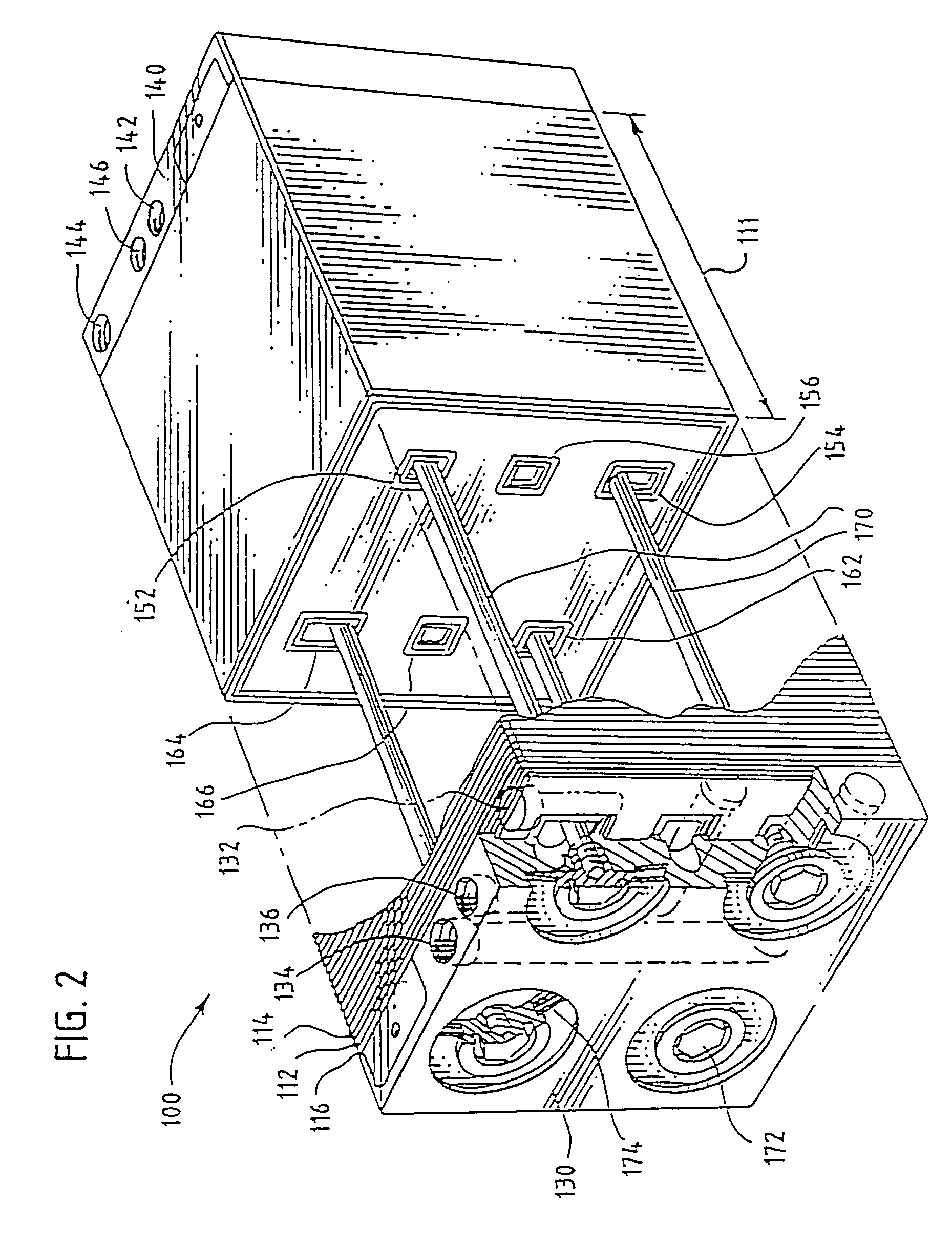Apparatus for improving the cold starting capability of an electrochemical fuel cell
a fuel cell and apparatus technology, applied in the direction of cell components, electrochemical generators, cell component details, etc., can solve the problems of damage to the structure within the stack, expansion of water remaining in the stack passage, etc., to improve the cold start capability and freeze tolerance of the fuel cell stack
- Summary
- Abstract
- Description
- Claims
- Application Information
AI Technical Summary
Benefits of technology
Problems solved by technology
Method used
Image
Examples
examples
Heat Treatment Methods
[0106]FIG. 14 shows a plot of stack voltage against operating time for an 8-cell Ballard Mark 513 fuel cell stack which was subjected to a series of freeze-thaw-operation cycles. Prior to freezing the fuel, oxidant and coolant passages were purged with dry gas. During the freezing cycles, the cell inlets and outlets were capped and the cell was placed in a freezer. Internal sealing pressure within the cell was maintained during freezing. The freezer temperature was approximately −20° C. The duration of the freeze in each case was greater than 12 hours. After some cycles the stack was operated normally, and after other cycles the stack operating temperature was increased to above its normal operating temperature for a period, before normal operation was resumed. The stack was operated on humidified air and hydrogen, both at 30 psig (207 kPa gauge), at stoichiometries of 2.0 and 1.5 respectively, at a current density of 700 ASF (7535 ASM) to generate the data sho...
PUM
| Property | Measurement | Unit |
|---|---|---|
| operating temperature | aaaaa | aaaaa |
| operating temperature | aaaaa | aaaaa |
| freezing temperature | aaaaa | aaaaa |
Abstract
Description
Claims
Application Information
 Login to View More
Login to View More - R&D
- Intellectual Property
- Life Sciences
- Materials
- Tech Scout
- Unparalleled Data Quality
- Higher Quality Content
- 60% Fewer Hallucinations
Browse by: Latest US Patents, China's latest patents, Technical Efficacy Thesaurus, Application Domain, Technology Topic, Popular Technical Reports.
© 2025 PatSnap. All rights reserved.Legal|Privacy policy|Modern Slavery Act Transparency Statement|Sitemap|About US| Contact US: help@patsnap.com



